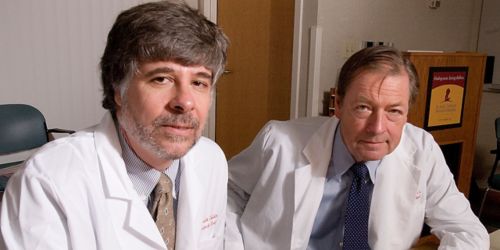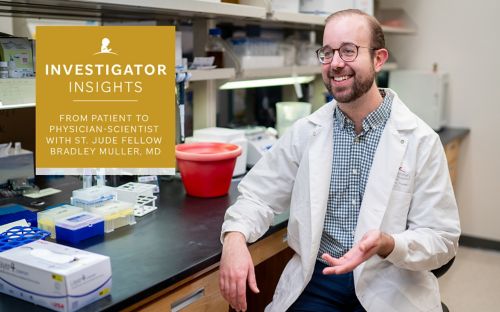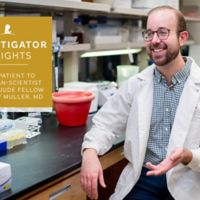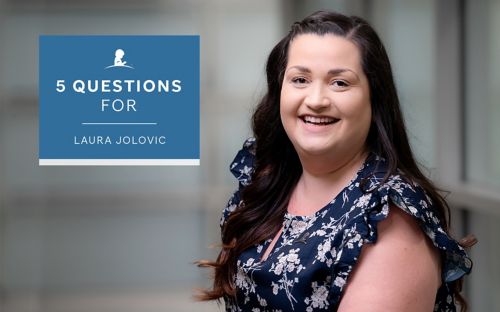With Brian Sorrentino, it was about more than just the science

Brian Sorrentino, left, and Arthur Nienhuis, right, at St. Jude in this 2006 photo.
Late last year I lost a friend, someone I’d mentored and respected. But the world lost a very creative researcher. Brian Sorrentino, MD, leaves a legacy of discovery that we, as scientists, respect, admire and aspire to emulate.
The silver lining within this sad news is the results of his work, the most significant portion of which highlights more than two decades of research. This research was recently published in the New England Journal of Medicine.
Read full results of the study.
Brian left us too early. He suffered late-effect lung cancer as a result of the high-dose radiation and chemotherapy he received as a teenager for the treatment of Hodgkin lymphoma.
I brought him and a few others to St. Jude more than 25 years ago to begin a research endeavor on the leading edge of science. I was confident not only of Brian’s talent as a scientist, but also in what may have been his greater talent – the ability to work well with others.
In 1998, Brian’s lab showed how gene therapy was a possible way to cure X-linked severe combined immunodeficiency (SCID-X1), a rare genetic disorder better known as "bubble boy disease." A packaging cell line developed in my laboratory was used to generate vector particles. We collaborated in developing the vector backbone which included an effective insulator element to improve safety.
This was the first demonstration that gene therapy could be a way to treat or cure SCID-X1, but there was much more to do.
Shortly after that news, French researchers reported the first SCID-X1 patients cured by gene therapy, but there was a problem. Leukemia surfaced as a treatment-related complication in some patients due to retroviral vector insertional mutagenesis. Brian focused his research on safety improvement, including novel insulated lentiviral vectors and improved assays to quantify this issue. In addition, he pioneered methods to generate vector particles from a stable producer line to streamline manufacturing.
Then, in 2016, Brian’s lab and others ran a trial on five adult males. This was the first trial of SCID-X1 to use a lentiviral vector. The research involved a streamlined stable production system, the chemotherapy drug busulfan to help re-establish the gene-corrected stem cells and other features for added safety and effectiveness.
In May 2018, he and his collaborators reported on a second gene therapy trial of eight patients, all younger than age 2 and diagnosed with SCID-X1. Six patients achieved reconstituted immune systems within four months of treatment, and two of the six discontinued monthly infusions of immunoglobin. The remaining patients continue to progress.
This research is perhaps the most impressive of Brian’s career – developing gene therapy protocols for SCID-X1, and patients showing promise of being cured. This work was performed by scientists all over the country, and Brian kept everyone on task.
He was a master at bringing people together. In addition to being a gifted scientist, Brian had an affable nature that helped people who shared a common interest and integrate their efforts to achieve something monumental. Over the years, he remained focused on gene therapy despite having to cope with myriad treatment-related complications from his own disease.
This discovery and subsequent publication was the culmination of years of work. I’m proud to have known him, and my grief from his passing is somewhat assuaged by the fact that he knew this was a breakthrough discovery. There is a cure for bubble boy disease, and Brian will forever be an integral part of that.






